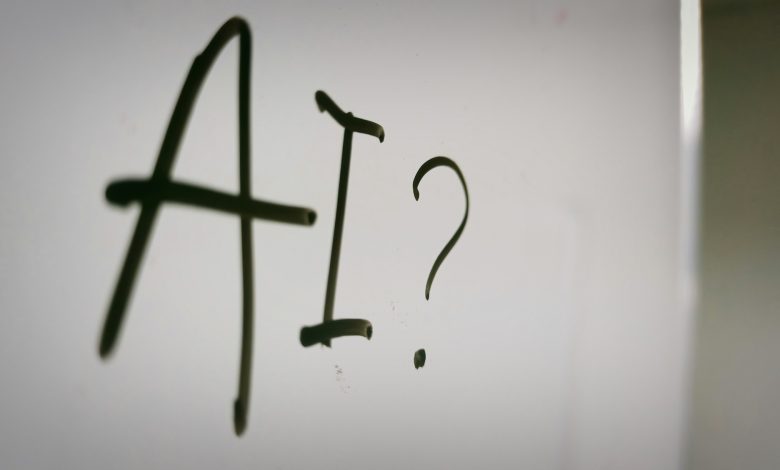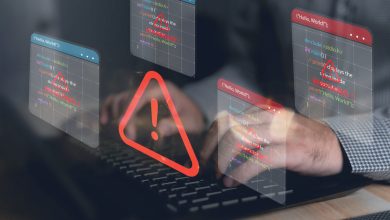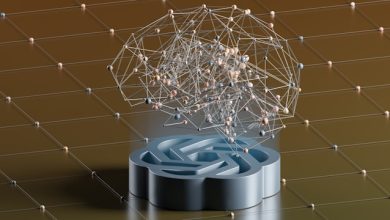
AI capability is doubling every seven months. Let that sink in. By 2026, artificial intelligence will handle tasks that currently take human experts two full weeks, up from just two hours today. By 2030, AI agents will autonomously complete month-long projects. This trajectory, based on research from Metr.org, is not speculative. It is a measurable trend that is already reshaping the cybersecurity landscape in ways most organisations have not fully recognised.
This rapid acceleration creates a core security paradox. The same technology that is transforming cyber defence is also introducing vulnerabilities that evolve faster than our ability to respond.
The Asymmetric Battlefield
The challenge for defenders is not simply that attackers use AI. It is that attackers use it without limits. While legitimate organisations operate within ethical, legal, and regulatory constraints, threat actors build unrestricted models with safety mechanisms removed. As outlined in the analysis on why attackers hold the AI advantage, adversaries move quickly, experiment freely, and deploy specialised attack tools while defenders deal with bureaucracy, legacy systems, and risk-averse processes.
This asymmetry is already visible in real-world attacks. Nation-state groups now use AI for vulnerability discovery, exploit development, and targeting critical infrastructure. Their sophistication goes far beyond traditional cybercrime. Attackers use AI to accelerate every phase of an operation, from reconnaissance and exploitation to lateral movement and exfiltration, adjusting their campaigns in real time as defences react.
The rise of specialised AI models amplifies the problem. Purpose-built tools trained for specific attack vectors consistently outperform general-purpose models. The barrier to creating these specialised systems continues to fall, which brings advanced offensive capabilities to a wider range of threat actors.
The Training Gap Crisis
One of the most concerning gaps in enterprise AI adoption is the human one. As referenced in the research on behavioural methods for cyber awareness training, 52 percent of employees have never received AI security training, yet 43 percent already feed sensitive data into unsanctioned AI tools without understanding the consequences. This is not just a training issue. It reflects a fundamental disconnect between the speed of AI adoption and the pace of human readiness.
CybSafe’s findings highlight a significant “knowing-doing gap.” Even among trained employees, fewer than half change their behaviour. Organisations celebrate AI-driven productivity, while their workforce remains unprepared for the security implications. Your overall security posture is only as strong as your least aware employee, and today most employees do not know what they do not know about AI risk.
The Evolving Threat Landscape
In this analysis of the threat shifts shaping 2025, four interconnected attack vectors stand out. Supply chain attacks have doubled to 26 incidents per month. Cloud identity has overtaken network perimeter as the primary target. Social engineering has evolved into a professionalised, automated service. Rapid AI adoption continues to create new attack surfaces faster than defences can adjust.
These are not isolated trends. They form a connected and mutually reinforcing ecosystem. A typical breach chain may begin with automated phishing to gain access, followed by cloud identity compromise for lateral movement. AI-powered tools accelerate data discovery, and supply chain access enables second-stage payloads to be delivered through trusted channels. Security models built around fixed perimeters and human-paced attacks simply do not hold up against these converging threats.
The financial impact reinforces the seriousness. Supply chain breaches cost organisations an average of 4.91 million dollars globally, based on IBM research. Companies with significant shadow AI usage face an additional 670,000 dollars per incident. These losses reflect both immediate damage and the compounding effects of multi-vector breaches.
What 2026 Will Bring: The Acceleration Continues
Looking ahead, the intersection of rapid AI capability growth and evolving threats paints a difficult picture. In the analysis of frontier AI capability trends, the leading models from OpenAI, Anthropic, and Google are set to cross important thresholds. These are no longer simple chat interfaces. They are general reasoning systems that will power autonomous agents capable of multi-step planning and self-correction.
By 2026, we should expect the following:
Autonomous Attack Campaigns: AI agents that independently discover vulnerabilities, craft exploits, and execute multi-stage attacks with no human involvement. The Shai-Hulud worm, which autonomously compromised more than 500 npm packages, was an early warning sign.
Hyper-Personalised Social Engineering: Systems that analyse thousands of data points to craft individually tailored attacks, making traditional awareness training far less effective. Phishing emails will feel custom-written for every recipient.
Real-Time Defensive Evasion: Attack tools that watch for defensive behaviour and immediately change their tactics to maintain persistence. Static rules cannot cope with adversaries that learn and adapt.
Supply Chain AI Poisoning: Attacks that target AI models directly, including poisoning training data or inserting backdoors into foundation models that then propagate across enterprises and vendors.
Building Tomorrow’s Defences Today
Moving forward requires accepting a difficult reality. Traditional security architectures were built for static threats and human-paced adversaries. They cannot keep up with AI-powered attackers operating at machine speed. As explored in the analysis on emerging AI threats and supply chain trends, organisations need transformation across four core areas:
Governance: Policies must evolve into dynamic frameworks that adapt as quickly as the threats themselves. Annual reviews are meaningless when AI capabilities double every seven months.
Technical Controls: Security tools must be designed for AI environments rather than retrofitted. Examples include runtime monitoring of AI behaviour, prompt-injection protections, and continuous authentication that treats AI systems as untrusted entities by default.
Data Security: Protection must follow data everywhere, including training datasets and model outputs. Classification systems must account for the possibility of reconstructed information derived from model weights.
Human Readiness: Training must be continuous. When threats evolve monthly, yearly or one-off training is ineffective. Employees need ongoing, hands-on exposure to AI tools and the risks associated with them.
Final Thoughts
AI capability growth is not slowing down. It is accelerating beyond initial expectations. Organisations that treat AI security as an optional layer on top of existing frameworks will fall behind attackers who use AI as a foundational capability.
The choice is not innovation versus security. It is proactive transformation versus reactive damage control. Every month of delay widens the gap between your defences and the threats advancing against them. With AI capability doubling every seven months, waiting until 2026 means confronting adversaries whose capabilities are orders of magnitude more sophisticated than what we see today.
For practical insights on navigating this rapidly evolving landscape, explore CyberDesserts. We bridge the gap between theoretical knowledge and real-world application, providing cybersecurity practitioners with hands-on tutorials, emerging threat analysis, and deep dives into enterprise security, AI risks, and compliance frameworks.
Author Bio:
Shak operates CyberDesserts, a cybersecurity blog at blog.cyberdesserts.com. He brings over 20 years of B2B cybersecurity vendor experience to create data-driven content for security professionals. He provides practical guidance to enterprise organisations through his work at Pentera.io Connect with him on LinkedIn.





